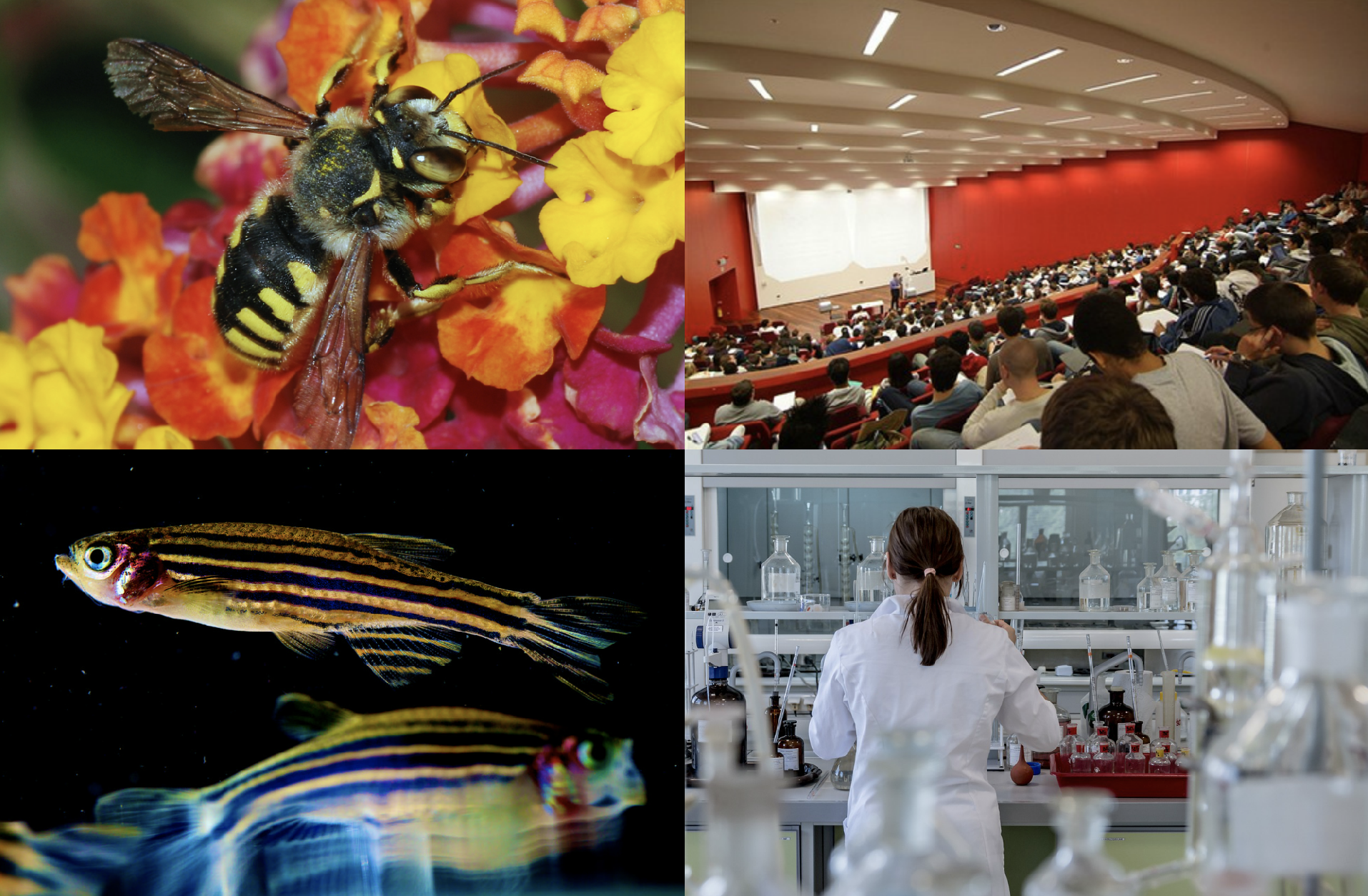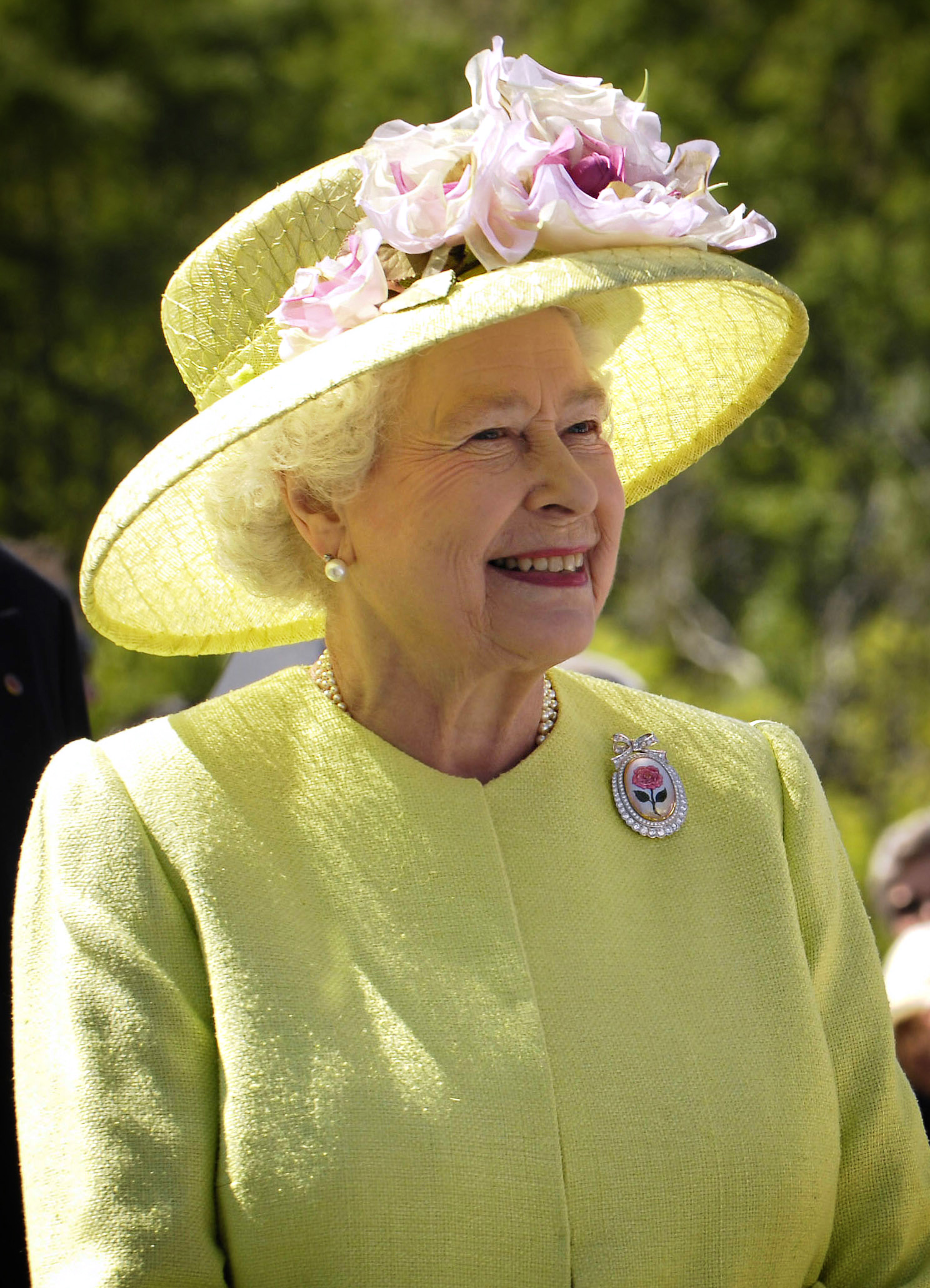(Image source: Flickr, Pixabay, Wikipedia)
Another academic year is coming to a close and with it, the last edition of The Badger. To celebrate our last science section, we asked final year Life Science students for submissions on their dissertation projects. Here is a collection of some of the brilliant students and the research they conducted in the past year, from Neuroscience lab work to investigating how science degrees are taught and how we can improve them:
Student and faculty perceptions of the effectiveness of Active Learning in the MPharm degree at University of Sussex
My biggest frustration, since I started studying Neuroscience at university, has been that almost all my modules rely on passive teaching methods like lectures – with little effort to engage students in discussions around the course material. Hardly engaging (academically) with my lecturers and peers, I would memorise information off slides without trying to evaluate or apply it to other contexts.
My dissertation surveyed Pharmacy students and faculty, measuring the extent to which they feel engaged during Active Learning sessions – a key part of their curricula – and how this impacts their understanding of course material. Active Learning is an instructional method where students become engaged participants in the classroom, focusing on the application of knowledge rather than its memorisation.
The findings of my report demonstrate that Sussex Pharmacy Active Learning sessions i) have high levels of engagement, and ii) effectively increase student motivation and interest, which improves their understanding. My favourite statistic was that 71% students and 100% faculty have fun during Active Learning sessions. And it should – science is fascinating and methods of teaching in higher education need to reflect this. My supervisors, Professor Buge Apampa and Dr Andrea Manfrin, plan to continue this research and publish on these findings.
– Simin Wadiwala Final Year Neuroscience
Quantitative analysis of RNA in neuronal plasticity and memory
My project was a lab experiment on the quantitative analysis of 3 different RNAs that directly related to neuronal plasticity and long-term memory formation. I completed my project with Dr Sergei Korneev who is an expert in epigenetics. Therefore, it was interesting to include one long non-coding RNA in my experiment. In brief, we recorded the change in the level of expression of 3 RNAs (CREB, NOS and anti-NOS) in the brain of Lymnea Stignalis after formation of memory.
The result was expected for CREB and NOS RNAs. However, the dynamic changes in the expression of anti-NOS, the long non-coding RNA was an evidence of the contribution of ncRNAs in memory formation. This finding can strongly support further studies that may be of interest to further our understanding in the mechanism of memory formation at the molecular level.
– Abdullah Skloua Final Year Student
Driving simulation based on cardiac timing; investigating fear and threat responses
For my project with Dr. Sarah Garfinkel, I investigated driving responses, to determine whether reactions to unexpected and potentially threatening events are faster and more efficient in people who are better able to feel their heart beating. Thirty participants engaged in a driving simulation task where they had to avoid obstacles (horses and pedestrians) as they drove along a road, and reactions times were recorded.Before the simulation task, participants undertook a heartbeat detection and discrimination task.
These tasks are measures of interoceptive accuracy, their ability to accurately sense internal bodily changes. Results revealed trend interactions between cardiac timing and obstacle distance, such that individuals reacted faster during systole for far obstacles and slower during systole for near obstacles. Our results enhance our understanding of how interactions between the body and the brain affect processing of threat stimuli, with implications for reactions while driving.
– Toni Mo Adeyemi Final Year Neuroscience
Motivation of Lymnaea stagnalis feeding behaviour and its possible link to serotonin levels in their brain
I tested learning and memory in the freshwater pond snails, Lymnaea stagnalis. Using a classical conditioning paradigm, the snails were tested to see if they could associate sucrose (i.e. sugar solution) with a more neutral chemical of amyl acetate. However, our results for this initial experiment came back as inconclusive and learning couldn’t be seen. In fact, the results showed that these snails had a highly increased feeding behaviour. Therefore, the experiments that proceeded were to test the motivation in the snails’ behaviour.
The factors we tested were food deprivation, water cleanliness and acclimatisation period to their environment. These results didn’t provide any definitive conclusions but did suggest that 2 factors were to contribute to the highly motivated feeding behaviour of the snails. Food deprivation is one of the main contributing factors. We also dissected the brains of some of the food-deprived snails and imaged them under a fluorescent microscope. This was done to assess whether there was a link between serotonin levels and food deprivation. There was some indication that the more food deprived the snail, the higher the level of serotonin in their brain but our sample size was too small to make any final conclusions.
Overall, my research project with Professor George Kemenes was a great experience where I gained invaluable skills. Working alongside senior researchers and a team of final years gave a great taste of what research life is like.
– Ali Velge Final Year Neuroscience
Expression of antibiotics in Streptomyces coelicolor bacterium using transcriptonal protein
I carried out my final year project in the Paget Lab. The focus of the project was to determine whether exploitation of the transcriptional protein RbpA, impacted cellular production of antibiotics in Streptomyces coelicolor. I was introduced to a vast array of new lab techniques and practiced methods like PCR, Blue-White Screening and DNA cloning that I had only ever learnt about theoretically in lectures previously. Although I did not yield significant results, I was able to utilise my data and draw interesting conclusions from it.
The project exists as a stable foundation from which further research can be conducted, to correct errors made and to employ different approaches to those that had been unsuccessful this time around. At the end of the 10 weeks, I had grown in confidence working in the lab and in my knowledge around the subject area, so I am glad I utilised this opportunity to gain more lab experience.
– Katy Taylor Final Year Biomedical Science
Photoreceptor connectivity imaging in larval Zebrafish
In my project, I tried to determine photoreceptor connectivity and morphology of bipolar cells (neurons which connect the outer and inner retina) in larval zebrafish. My supervisor devised a set of transgenic and immunolabelling which labelled retinal structures that could be imaged using confocal microscopy.
As a complete novice in the lab I learned; most of my time in the lab was used desperately trying not to break or drop the minuscule fish eyes. After several months, and more than several mishaps in the lab I collected some beautiful confocal images and data from my experiments. The data showed links between bipolar cell connectivity and cellular location in the retina; this supports the theory of differential visual processing occurring across the retina. Hopefully, the role of bipolar cells in colour processing across the retina will be examined further in the lab using invivo live imaging of the retina.
This project would have been impossible without the marvellous lab group I was lucky enough to be a part of for a few months, each one of them welcoming and showing near limitless patience. This project has been the highlight of my degree and I’m so grateful everyone in Dr. Tom Baden’s lab for this experience!
– Lyra Whitehouse Final Year Neuroscience
Industrial placement in protein degradation therapeutic techniques
For the third year of my chemistry degree I chose to do an industrial placement and have spent the last 8 months working at GSK in Stevenage in the Protein Degradation DPU. Protein degradation is a novel therapeutic, focusing on the total removal of a disease-causing target rather than temporarily blocking its function. PROTACs, the molecules used for protein degradation, do not fit into the traditional guidelines of drug discovery, such as the Lipinski rules, and so their design and synthesis poses additional challenges to scientists.
Throughout my placement I have gained a deeper understanding of the drug discovery process, learning from projects in various stages such as hit identification, lead optimisation and candidate selection. More than 90% of drugs fail before they reach the market, resulting in high cost to the pharmaceutical industry. However, the drug pipeline ensures that research on new targets is carried out while treatment for others is approved for sale.
I have been working full time in the lab developing and testing PROTACs. After initial training, the degree of independence is very high, giving a more realistic experience of a job in industry, and allowing me to improve my practical skills while assisting in research that could go on to improve lives.
– Izzy Tibbetts, Year in industry Chemistry Student
Sun’s out bees’ out
My work focuses on how weather impacts bee foraging and I also conduct research on solitary bee ecology, focusing on a few rare species. When I think about spring I think about sitting out in the garden with a glass of Pimms, blossoming trees, bluebells and most importantly, bees. In the UK, there are hundreds of bee species even here and now is a great time to see them.
Most people who think of bees will automatically jump to the infamous honeybee, the master pollinators who have a soft spot in many people’s hearts, however they make up only a fraction of the bee species worldwide and here in the UK. Globally there are around 20,000 different species of bee, with only seven species of honeybee, one of these being the well-known domesticated species. In the UK we have around 270 different species. 24 bumblebees, one species of honeybee and what makes up the rest is the often forgotten, but no less deserving of our love and affection, solitary bees.
Most people are aware that honeybees live in large colonies, reaching up to 60,000 individuals, and that each colony has one queen. All the other individuals are the workers, whose sole job is to ensure the working efficiency of the hive and to protect their supreme ruler. This isn’t the case for solitary bees. Instead of a huge colony with thousands of workers to care for the babies laid by the queen, there is just one female laying eggs which she alone must provide food for.
Solitary bees show a wide variety of nesting habits. You have those that prefer soft, relatively bare banks where the female will dig her nest. You then have the leaf-cutters, who will find holes in things like dead wood, walls or even in plant stems. They will then cut out parts of vegetation which they use to create a cocoon to create individual compartments for each of their larvae.
Solitary bees are incredibly versatile when it comes to where they nest, with some species even making use of snail shells. Spring is such an important time for these bees, it’s when they begin to emerge from their winter slumber and must leave behind the safety of their mother’s basement (something we can all relate to) and find a home of their own. With increasing agricultural intensification and homogenising of landscapes this task is becoming increasingly difficult, however we, the public, can help.Bee hotels are becoming increasingly popular, you have probably seen the hipster chic bee blocs (which may or may not work) however you don’t need to spend £30 to give a bee a happy home.
As you walk around campus you might notice some plastic bottles hung on wood titled Air Bee n’ Bee. This is a citizen science project running here at Sussex testing different designs for bee hotels to try and determine which might work the best for our solitary bees. The best thing about these designs is that they are entirely DIY using upcycled materials, such as plastic milk cartons and bamboo sticks. The bees don’t care what they look, so if you’re like me and don’t have an artistic bone in your body it doesn’t matter!
If you’re lucky enough to have a garden or some kind of green space you can also provide food for your new found invertebrate friends. Solitary bees love wildflowers. Things like ground ivy, dandelions and speedwells, all are very pretty and great forage for bees.If you do any of these few simple tasks, when you’re in your garden enjoying some Pimms, you can be safe in the knowledge that the bees flying past you have a safe home to live in and plenty of food to eat.
Georgia Hussey Second year Phd Student




